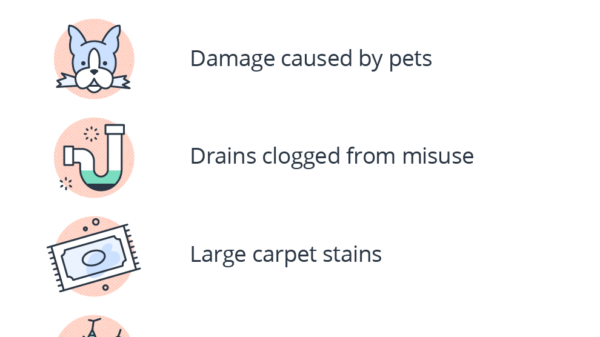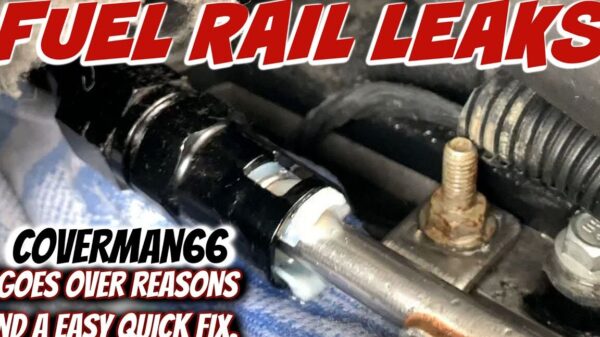📰 Table Of Contents
- 1 Essential Steps to Repairing a Vehicle That Has Run Out of Oil
- 2 Can you Fix an Engine Burning Oil for $20
- 3 Is it possible to repair an engine after it has run out of oil?
- 4 Can a vehicle recover from running out of oil?
- 5 Can an engine recover from lack of oil?
- 6 What should you do if your car is losing oil?
- 7 Questions you’ve probably asked yourself
Essential Steps to Repairing a Vehicle That Has Run Out of Oil
Introduction:
Running out of oil in your vehicle can be a stressful situation. However, with the right steps and precautions, you can fix this issue and prevent any further damage. In this guide, we will walk through the essential steps to repairing a vehicle that has run out of oil.
Step 1: Pull Over and Stop Safely
As soon as you realize that your vehicle has run out of oil, it is crucial to pull over and stop safely. Continuing to drive without oil can cause severe damage to the engine. Find a safe spot to park your vehicle and turn off the engine.
Step 2: Assess the Damage
Once you have stopped safely, assess the damage caused by running out of oil. Look for any warning signs like strange noises, smoke, or excessive heat from the engine. It may be necessary to call a professional mechanic for further assistance, especially if the engine has been severely damaged.
Step 3: Add Oil
If the engine is still in working condition, it’s time to add oil. Open the hood of your vehicle and locate the oil filler cap. Remove the cap and carefully pour the appropriate amount of oil into the engine. Refer to your vehicle’s manual or consult a professional if you are unsure about the correct type and amount of oil to use.
Step 4: Restart the Engine
After adding oil, close the oil filler cap securely. Start the engine and let it run for a few minutes to allow the new oil to circulate throughout the engine. Pay attention to any unusual noises or warning lights during this time.
Step 5: Monitor Oil Levels
After adding oil and restarting the engine, it’s important to monitor the oil levels regularly. Check the oil dipstick to ensure that the oil level is within the recommended range. If the oil level continues to drop rapidly, there may be an underlying issue with your vehicle that requires professional attention.
Conclusion:
Running out of oil in your vehicle can lead to serious engine damage, but by following these essential steps, you can mitigate the potential harm and get your vehicle back on track. Remember to pull over safely, assess the damage, add oil as needed, restart the engine, and monitor the oil levels regularly to keep your vehicle running smoothly.
Can you Fix an Engine Burning Oil for $20
Is it possible to repair an engine after it has run out of oil?
Yes, it is possible to repair an engine after it has run out of oil. However, it is important to note that running an engine without oil can cause extensive damage, so the repairs might be costly and time-consuming.
When an engine runs out of oil, the lack of lubrication causes increased friction between the moving parts, leading to overheating and damage. Here are some steps to follow to repair the engine:
1. Stop the engine immediately when you realize it has run out of oil.
2. Tow the vehicle to a repair shop or a trusted mechanic specializing in engine repairs.
3. The mechanic will inspect the engine thoroughly to assess the extent of the damage. They might need to dismantle parts such as the cylinder head, piston rings, connecting rods, crankshaft, and bearings for a closer examination.
4. Depending on the severity of the damage, the mechanic might recommend repairing or replacing the damaged components. This could include replacing the damaged bearings, fixing or replacing bent or broken rods, honing or resurfacing the cylinder walls, or even replacing the entire engine if necessary.
5. After the repairs are completed, it is crucial to follow a strict maintenance routine to ensure proper lubrication and prevent the same issue from reoccurring. This includes regular oil changes, using the recommended oil type, and monitoring oil levels regularly.
Remember, prevention is always better than a cure. To avoid engine damage due to oil loss, make sure to check your oil levels regularly, follow the manufacturer’s recommended maintenance schedule, and address any oil leaks promptly.
Can a vehicle recover from running out of oil?
Yes, it is possible for a vehicle to recover from running out of oil. However, the severity of the damage caused by running out of oil can vary depending on the length of time the engine was operated without sufficient lubrication.
If the engine was only run for a short period of time after running out of oil, there may be minimal damage. In this case, adding oil to the engine and allowing it to circulate may be enough to get the vehicle back up and running.
However, if the engine was ran without oil for an extended period of time, significant damage can occur. The lack of lubrication can cause the engine components, such as the pistons, bearings, and crankshaft, to overheat and seize. In such cases, additional repairs or even engine replacement may be necessary.
It is always important to regularly check and maintain oil levels in a vehicle to prevent running out of oil. If a vehicle does run out of oil, it is essential to address the issue immediately and assess the extent of the damage.
Can an engine recover from lack of oil?
No, an engine cannot recover from a lack of oil. Oil is essential for lubricating the engine’s moving parts and reducing friction and heat. Without proper lubrication, the engine components can experience excessive wear and eventual damage. If an engine runs without a sufficient amount of oil for an extended period of time, it can result in irreversible damage, potentially leading to engine failure. Therefore, it is crucial to regularly check and maintain the oil levels in your engine to ensure its proper functioning and longevity.
What should you do if your car is losing oil?
If your car is losing oil, here are some steps you can take to fix the issue:
1. Check for leaks: Look for any signs of oil leaking from your car. Inspect the ground where you park for oil stains or puddles. Leaks can occur from various places such as the oil pan, valve cover gasket, or oil filter.
2. Tighten loose components: Sometimes, oil loss may be due to loose bolts or fittings. Check if any of the components related to the oil system, such as the oil drain plug or oil filter, are loose. Use the appropriate tools to tighten them securely.
3. Replace worn-out gaskets or seals: Over time, gaskets and seals can wear out or become damaged, resulting in oil leaks. Inspect the gaskets and seals associated with the oil system, including the oil pan gasket and the valve cover gasket. If they are worn or damaged, consider replacing them.
4. Check the oil filter: A faulty or improperly installed oil filter can lead to oil leaks. Ensure that the oil filter is correctly installed and tightly sealed. If it appears damaged, replace it with a new one.
5. Inspect the PCV (Positive Crankcase Ventilation) valve: The PCV valve regulates the flow of gases between the crankcase and intake manifold. A malfunctioning PCV valve can cause excessive pressure in the engine, leading to oil leaks. Check the PCV valve for blockages or defects, and replace it if necessary.
6. Monitor oil consumption: If your car continues to lose oil even after addressing possible leaks or issues, it may indicate an underlying problem. Excessive oil consumption could be a sign of an engine issue such as worn piston rings or valve stem seals. In such cases, it’s recommended to consult a professional mechanic for further diagnosis and repair.
Remember, regular maintenance and timely detection of oil leaks can help prevent more severe engine damage.
Questions you’ve probably asked yourself
How to fix a car that ran out of oil?
To fix a car that ran out of oil, you will need to refill the engine with oil. First, locate the oil filler cap and unscrew it. Pour in the appropriate type and amount of oil as recommended by the car manufacturer. Afterward, start the engine and let it run for a few minutes to allow the oil to circulate throughout the system. Finally, check the oil level on the dipstick to ensure it is at the correct level.
What are the steps to take when a car runs out of oil?
The steps to take when a car runs out of oil are:
1. Pull over immediately: As soon as you realize that your car has run out of oil, safely pull over to the side of the road or into a parking lot.
2. Turn off the engine: Once you have stopped, turn off the engine to prevent any further damage.
3. Allow the engine to cool down: It’s important to let the engine cool down for at least 10-15 minutes before attempting to check the oil level or adding more oil.
4. Check the oil level: Open the hood and locate the oil dipstick. Pull it out, wipe it clean, reinsert it, and then pull it out again to check the oil level. If it’s below the minimum mark, you will need to add more oil.
5. Add oil: Take the appropriate type of oil for your car’s engine and pour it into the oil filler cap, making sure not to overfill it. Refer to your car’s manual for specific instructions on how much oil to add.
6. Check for leaks: Once you have added oil, check underneath the car for any signs of leaking. If you notice any leaks, it’s recommended to have your car inspected by a professional.
7. Restart the engine: After adding oil and checking for leaks, start the engine and listen for any unusual noises. If everything sounds normal, you can continue driving, but remember to monitor the oil level regularly.
Note: Running a car without enough oil can cause severe engine damage, so it’s crucial to address this issue promptly and properly.
Are there any long-term consequences if a car runs out of oil?
Yes, there can be significant long-term consequences if a car runs out of oil. When a car runs out of oil, the engine lacks proper lubrication, leading to increased friction and heat. This can cause severe damage to the engine components, including bearings, pistons, and cylinders. The engine may seize or fail completely, requiring expensive repairs or even a full engine replacement. It is crucial to regularly check and maintain proper oil levels to avoid these long-term consequences.
In conclusion, running out of oil in your car can cause serious damage to the engine if not addressed promptly. However, fixing a car that ran out of oil is a relatively simple process that can save you from costly repairs. Remember to immediately pull over and turn off the engine when you realize you’re out of oil. Then, add the necessary amount of oil and check for any leaks or damages before starting the engine again. Regularly monitor your oil levels and maintain routine oil changes to prevent this issue from occurring in the first place. By following these steps, you can ensure the longevity and performance of your vehicle.

































































